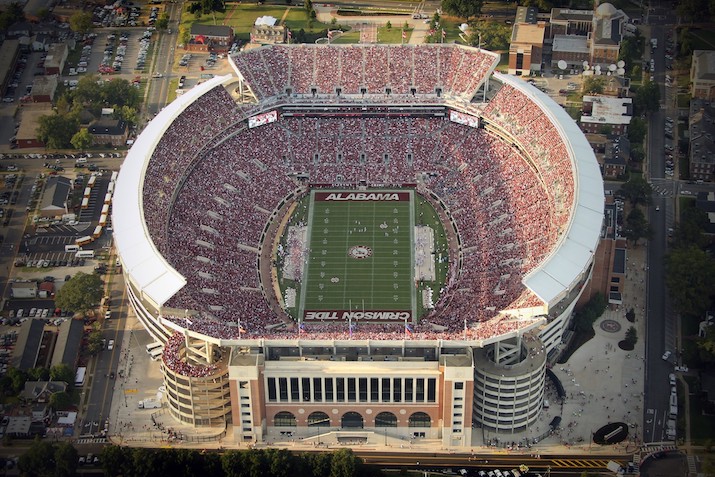Tech Focus: Venue Sound, Part 1 — Designs Apply Lessons From Music Tours’ Systems
Impactful is new buzzword in stadium sound
Story Highlights
As with everything else in sports, COVID-19 rearranged venue sound: entirely new sound systems were designed and installed specifically to propagate the sound of artificial crowds, both onto the courts and playing fields and into the broadcasts, compensating for the lack of fans in the stands. It was a condition that persisted for well over a year, spanning most of 2020 and 2021. Now, as the seats are once again mostly filled, the focus has returned to what it takes to make a stadium or arena sound great.
A venue’s signature sound, which is largely established well before its sound system is installed, comprises a combination of acoustical architecture and treatments. The sound system can either complement that combination or try to ignore it. The latter involves highly directed sonic energy that is tightly focused on seating areas and away from reflective surfaces, such as walls and floors, minimizing acoustical interactions with the venue’s materials.
That’s the way system design has trended for most of this century. However, the task is harder today than ever, given the increasingly extensive use of glass inside arenas and stadiums to cover suites and other discrete areas.
But it’s a capability that high-end touring sound systems have achieved. These systems move from venue to venue and seek to avoid becoming part of each acoustical signature and to keep the music from the stage as uncolored as possible. That technical capability is being aggressively applied to sports venues.
“The intent is to excite the room as little as possible, so that the sound system can reproduce what it’s intended to amplify as accurately and authentically as possible,” explains Dan Palmer, business development manager, sports facilities, USA and Canada, L-Acoustics, whose portfolio includes the NFL Arizona Cardinals’ State Farm Stadium and the NBA Philadelphia 76ers’ and NHL Flyers’ Wells Fargo Center. “In addition to delivering concert-quality sound, the level of support that sports venues require now is also much higher. We’ve doubled down on that in terms of training, software modeling, and [system] calibrations.”Sports venues are paying more for high-end, “tour-rider–ready” sound systems, referring to the brands and models of systems demanded by top touring music artists and shows. But they’re also able to promote those systems, particularly upper-level–installed speakers, as able to be used as seamless-delay extensions of a visiting touring system, reducing a tour’s transport and rental costs.
“The right kind of sound system can help drive business [beyond sports] for the venue and contribute to [the system’s] ROI,” says Palmer.
Schools Are Out Front
College sports venues have tended to lead some industry trends in live sound, mainly because their youthful home audiences make their musical preferences clearly known. That has pushed the low end in systems, with hip-hop and other genres once known as “urban” becoming prominent.
But use of such systems clashes with the trend toward ever-larger scoreboards, and the growth in venue video makes it harder for sound to do the same. Integration of video and audio into the same unit has been a trend for some time, and form-factor consolidation helps optimize space for such large constructions.
However, video has been increasingly crowding out sound-system components. That’s behind a design trend to extract more energy and ever lower bandwidth from smaller form factors. It’s a conundrum that would cause head-scratching among physicists.
“Scoreboards are getting larger to accommodate larger displays; however, the space allocated for loudspeakers is often becoming more restricted,” confirms Stephen Siegel, president/CEO, Fulcrum Acoustic, adding that the company developed its AHS loudspeaker modules specifically to address that trend for scoreboard-mounted audio systems. At approximately 30 in. square x 28 in. deep, they can be more easily maneuvered within scoreboard structures.
“College venues are the three L’s: louder, lower, and little,” observes Mike Hedden Jr., president/CEO, Danley Sound Labs, whose portfolio includes systems at the flagship stadiums at Arizona, Michigan, and Louisiana State, emphasizing the push to make form factors more compact. “They want to play a Dua Lipa or The Weeknd or a Post Malone track and really feel it everywhere in the venue.”
Marc Lopez, VP, marketing Americas, d&b audiotechnik, declares, “Video is still king.” The company’s U.S. sports installations include Rice Stadium in Houston and the MLB Mariners’ T-Mobile Park in Seattle. He notes that d&b has also developed a smaller–form-factor line to address scoreboard encroachment on audio’s real estate in stadiums: the Y-Series or the new XSL system are internally referred to as “light and loud.”
Players Make Themselves Heard
Although the venues themselves make final decisions regarding their sound, resident teams and even individual players are influencing those decisions. It’s a trend clearly visible in basketball and, more recently, baseball, sports in which individual athletes are closely connected with music.
“NBA players travel from arena to arena,” notes Justo Gutierrez, director, AV and sound, sports and live events, Diversified. “When they hear the newest sound system somewhere, they come back and compare that to what [their home arena has], and it’ll often result in a new system or an upgrade.” Integrator Diversified’s portfolio includes the NFL Jets and Giants’ MetLife Stadium in New Jersey and the NHL Red Wings and NBA Pistons’ Little Caesar’s Arena in Detroit. “Sound quality has become very player-driven, and it’s a combination of the players and the fans that is driving higher expectations for the sound quality. The shift in baseball stadiums is particularly noticeable: baseball parks historically made do with typical public-address–type systems. Now, with players wanting their own walk-up music, [stadiums are] moving towards impact-type sound.”
When Bass Leads the Band
The audio industry has long been enamored of buzzwords, and the current popular one is impactful, putatively a way of expressing powerful punch without excessive volume, but it has been subject to interpretation.
“Client will say we want an ‘impactful park,’ an ‘impactful sound system,’ but that’s often misinterpreted as just loud,” says Demetrius Palavos, VP, sports integration, Clair Global. “There are ways to use the tools to get truly impactful sound, and that comes down to proper production techniques and paying attention to the signal chain and dynamic range. You can achieve a [volume] level that people perceive as loud but that doesn’t show up that way on an SPL meter. There’s a lot more to impactful sound than just volume.”
The pursuit of perceptual impact can lead to other issues. For instance, Palavos cites the demand, especially in arenas, for more and more bass. A problem arises when the rest of the frequency spectrum that the PA system is pumping out can’t keep up with massive subwoofer arrays, creating a tonal imbalance that can negatively affect both speech intelligibility and music reproduction.
“The system needs to be designed so that all the band passes can keep up with each other,” he cautions.
No Longer Either Music or Sports
Sports venues have become a major field of competition for more than the teams in their leagues. What was once a secondary vertical in the live-sound sector has risen to prominence along with the media profile of broadcast sports itself, helped not a little by the dramatic decline in music touring during the pandemic. For instance, the bubble built by the NBA for its 2020 season compelled development of new sound systems to project artificial crowd sound directly onto the courts, to energize athletes and provide a semblance of sonic normalcy to home viewers. As a result, sports venues are now flagship projects that manufacturers promote as enthusiastically as they once touted touring rock and pop acts using their systems.
And it’s working. Danley Sound, for instance, shows off a clip in which ESPN’s College GameDay analyst Kirk Herbstreit compliments its system installed at Bryant Denny Stadium at the University of Alabama, proclaiming, “They did not buy cheap speakers when they redid this place,” and adding, “Nowadays, fans want a show.”
The interaction between music touring and sports venues is taking its own interesting turn. Hedden says the company’s experience with low-frequency propagation at such scale has actually accelerated its more recent moves into the music-festival–sound-system market in the U.S. and Europe, a reverse of the trend in which music-tour–sound-system suppliers like L-Acoustics and d&b audiotechnik are moving deeper into sports venues.
A venue and its sound system, he notes, are less often designed for either sports or entertainment and more likely to be intended to handle both.
Click here for Tech Focus: Venue Sounds, Part 2 — The Pandemic Didn’t Slow Sonic Progress




